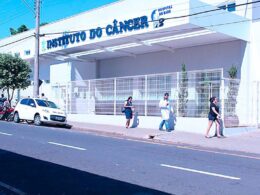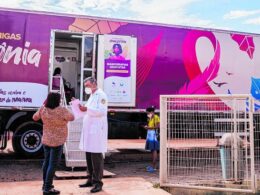This is a republication of the article below, under the title above.
Overall cancer survival inequalities in the state of São Paulo: A comparison between public and private systems.
ASCO — American Society of Clinical Oncology
Bruno Casaes Teixeira
2022 ASCO Annual Meeting
ABSTRACT
Background:
Brazilian cancer patients under the public healthcare system receive diagnoses and treatment at a later disease stage on average than private patients, likely due to the public system having less access than the private system to treatment and diagnostic technologies.
The impact of the different healthcare systems on survival is unknown.
We aimed to evaluate the difference in overall survival (OS) in cancer patients under public vs. private healthcare systems in São Paulo, Brazil.
Brazilian cancer patients under the public healthcare system receive diagnoses and treatment at a later disease stage on average than private patients, likely due to the public system having less access than the private system to treatment and diagnostic technologies.
Methods:
Data were drawn from the hospital-based cancer registry of the Fundação Oncocentro de São Paulo capturing clinical and demographic data including clinical setting (private/public), date of diagnosis, and disease stage.
All patients had complete medical records and malignant, well classified tumors.
Analyses used Cox proportional hazards regressions. For multivariate (MTV) and propensity score matched (PSM) analyses; tumor topology and morphology, patient demographics and diagnostic care setting were used as covariates.
Analyses were performed for overall cancers and for 20 separate tumor types as recommended by the National Institute of Cancer.
Results:
Data from 189,850 patients were analyzed.
For all cancers, the hazard ratio (HR) for OS for public vs. private healthcare was
- 2.30 (CI 95% 2.20–2.39) in univariate (UNV),
- 1.59 (CI 95% 1.52–1.66) in MTV and
- 1.69 (CI 95% 1.61–1.77) in PSM,
indicating that patients under the public system were between 2.30 and 1.69 times less likely to survive their cancer (Table 1).
The cancer type with the biggest HR using PSM was multiple myeloma (HR 2.37 CI95% 1.82–3.08).
Conclusions:
Our results show Brazilian cancer patients under the public healthcare system were in some cases more than twice as likely to die from cancer than private patients.
Despite possible differences between these populations in lifestyle and other potential influencing factors, our results most likely reflect differences between the two systems in access to treatment and diagnostic technologies.
Our findings highlight the inequality of care in public vs. private healthcare in Brazil. Focus should be on closing the gap between the two systems in cancer diagnosis and treatment.
Our findings highlight the inequality of care in public vs. private healthcare in Brazil. Focus should be on closing the gap between the two systems in cancer diagnosis and treatment.
Authors
Bruno Casaes Teixeira
Adelphi Real World, Bollington, United Kingdom
Bruno Casaes Teixeira,
Alex Rider,
Tim Holbrook,
James Piercy,
Michael Patrick Lux
Organizations
Adelphi Real World, Bollington, United Kingdom,
Kooperatives Brustzentrum Paderborn, Frauenklinik St. Louise, Paderborn, St. Josefs-Krankenhaus, Salzkotten,
Frauen- und Kinderklinik St. Louise, Paderborn, Germany
Originally published at https://meetings.asco.org












